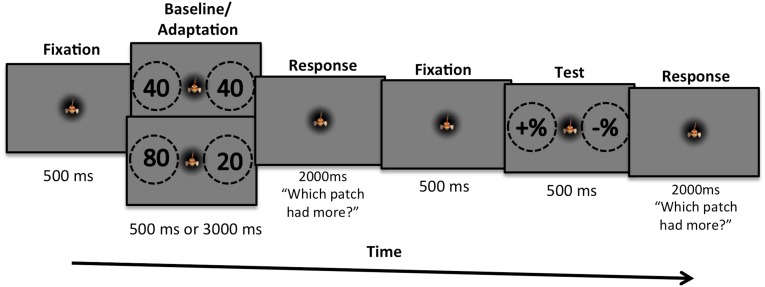Fig. 1.
The paradigm used to measure the numerosity effect in children. In the baseline condition, “adaptation” was to a neutral numerosity (40 dots each side, the average number in the test) and lasted 500 ms. In the adaptation condition (shown here) the adaptation stimuli comprised 80 dots on the left and 20 dots on the right and lasted for 3,000 ms (with dot positions randomized every 500 ms). Participants were told to respond after each pair was presented (to prevent confusion of when to respond) but only responses following the test pair were of interest.

